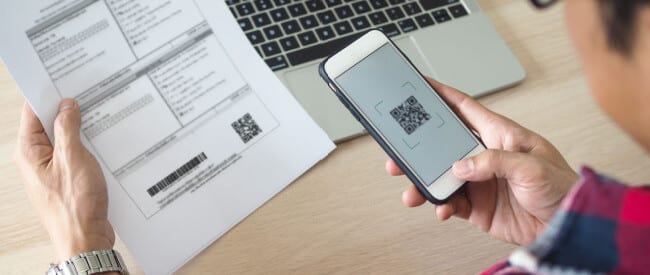Consumers keep telling companies that they want digital options for communications, ePresentment, account management and payments. But companies often struggle to attract customers to their online portals in the first place or keep consumers returning.
Digital demand is clearly growing, with a whopping 125 million new consumers in the United States and Europe adopting digital channels during the pandemic, according to McKinsey’s 2022 Global Digital Sentiment Survey. But just as use has risen, so have expectations.
Going digital is highly attractive to businesses, too. When an average customer call costs between $9 and $15, including labor, according to HubSpot, there’s ample incentive to promote online self-service. Businesses also love the improved cashflow and greater efficiency by moving customers from call centers, mailed checks and in-person encounters to portals.
Disappointing digital experiences
Here is the catch: Digital alone is not enough. Take online payments. Just 39% of consumers say the biller’s website is their payment channel of choice, according to the 2H 2022 ACI Speedpay Pulse survey.
Thanks to ever-rising standards set by Amazon and other leaders, consumers are looking for fast, easy, intuitive, and convenient online portals. But too often they are not getting what they want. For example, 29% of North American consumers who are dissatisfied with digital channels blame poor user experiences/user interfaces, according to McKinsey.
Make portals more engaging and effective
To get portals right, the key is to focus on how consumers use them. Here are six steps for improving portal experiences and increasing use.
- Make it mobile-responsive. In the first quarter of 2023, mobile devices (excluding tablets) generated 58% of global website traffic, according to Statista. So often consumers are using their cell phones to access, navigate and conduct business on portals—from finding information and viewing statements to making payments. But do not assume all consumers have smartphones. Portals need a mobile-first design, but content, navigation and layout need to work well for all types of devices.
- Balance security and ease of use. Login processes should not be so difficult that people regularly leave the site before accessing their accounts. But they also must reassure consumers that their information and actions are secure. One example is that two-factor authentication has increasingly become the standard.
Collections firms face a higher security hurdle. They must validate the consumer—requiring them to provide social security numbers or zip codes, for instance—as part of the initial account signup and before giving them access to the portal and their online account information.
To streamline portal signups, some collections firms create mailed communications with unique QR codes. The consumer scans the QR code for a direct login, then receives a 6-digit code via text to complete the validation process for accessing the portal.
- Connect through omnichannel communications. Why not include a link to the portal in digital communications such as email and text messaging? These links can also be encrypted and allow for automatic login. Companies can use color, the QR codes mentioned above and URLs in mailed letters, bills, and other documents to drive portal engagement, from making payments to finding tax documents. Some also include prompt pay discounts and other special offers only available through the portal. Call-center reps can use similar tactics. If consumers are reluctant to disclose payment information over the phone, the rep can ask for consent to send a text with a link to the payment portal.
- Leverage brands and services that consumers trust. During an AccountsRecovery.net webinar, Steve Kusic, CEO of NRA Group (National Recovery Agency), explained that his firm recently added ApplePay, GooglePay, Venmo and PayPal as payment options to its portal. Consumers who are not familiar with his company, which handles bad debt for other businesses, are nonetheless comfortable and secure using these services, thus removing barriers to online payment, he noted.
- Personalize the experience. Companies can use technology engines to establish business rules so portal interactions meet all applicable state and federal laws and regulations for specific consumers. They also can program interactions to present information or options that comply with policies set by individual corporate clients, such as parameters for allowing consumers to create payment plans, take advantage of settlement offers or pay by credit cards. The use of personal preference tracking and AI-driven technology will provide a more personal user experience, showing the user what they want and even what they need.
- Use analytics to continue upgrading experiences. It is critical to track and analyze portal users. Use platforms that collect data from your websites and apps to create reports that provide insights into your business. With Google Analytics, for instance, companies can identify and fix broken or cumbersome steps that make consumers drop. They can see top features, top searches and what consumers spend the most time on, then adapt the portal to make those easier to find or use. One firm discovered 90% of its traffic occurs between 11-2 pm daily. As a result, the company experimented with dynamically changing the website at different times of day to promote payments. It also sent emails and texts, including billing statements and payment reminders, before 11 am.
Deliver excellent portal and other digital experiences with Nordis Technologies
Our patented Expresso® CCM platform and ExpressoPay® electronic bill presentment and payments system provide an integrated communications and payments technology solution that companies leverage for improving efficiency, effectiveness, and user experiences for both customers and employees.
Our cloud technologies give companies the control and visibility to efficiently scale their businesses, simplify operations, rapidly adapt to consumer preferences and changing business conditions, and provide superior customer service. We create branded portals with ExpressoPay that meet the strictest regulatory and compliance requirements, including HIPAA, SOC2, SSAE 18, and PCI-DSS Level 1.
We are revolutionizing customer communications and payments with innovative, technology-driven solutions that enhance our clients’ businesses and offer a competitive advantage. If you would like to learn more about how we can help you, please contact us.
